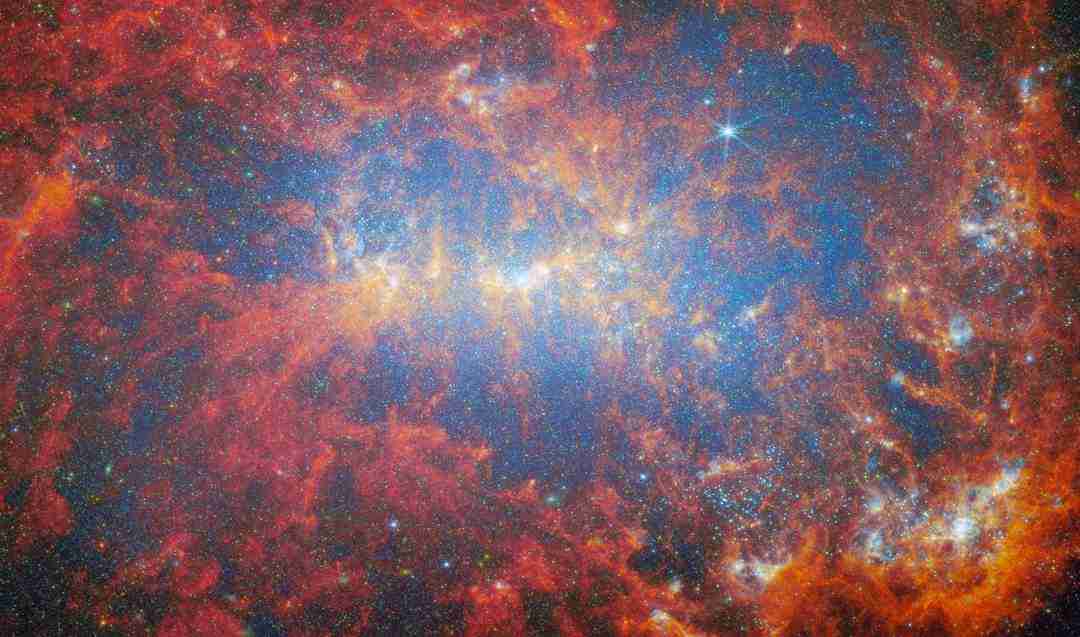Webb took a look at “starburst” galaxy NGC 4449, located 12.5 million light years away. Starbursts are intense periods of star formation usually concentrated at a galaxy’s core, but NGC 4449’s activity is much more widespread — likely due to past interactions with its galactic neighbors.
Observing in both near- and mid-infrared light, Webb reveals incredible detail. Individual stars are seen as bright blue spots. The diffuse blue gradient at the core shows the distribution of older stars, while young star clusters, glowing yellow, are concentrated at the edges. Orange-red areas indicate the distribution of carbon-based compounds; red corresponds to hydrogen-rich regions.
Astronomers can study NGC 4449 to peek into the past. This galaxy is similar to early star-forming galaxies, which also grew by merging with other systems.
Credit: ESA/Webb, NASA & CSA, A. Adamo (Stockholm University) and the FEAST JWST team
#universe #nasa #jwst #webb #telescope
